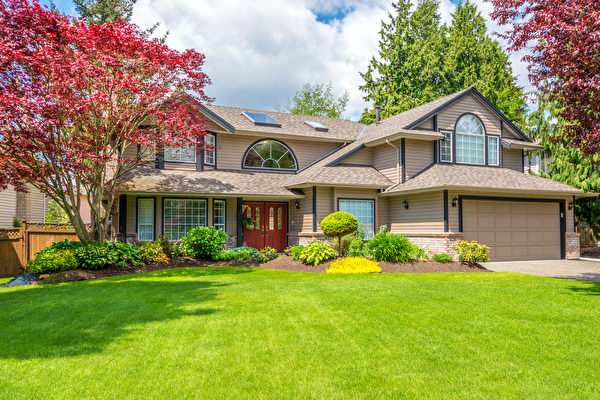Owning a home, especially a standalone house with its own yard, is a dream come true for many Chinese families in the United States. In New York City, realizing this dream is becoming increasingly expensive.
Over the past decade, the median sale prices of standalone houses in New York City, including Manhattan, Brooklyn, Queens, the Bronx, and Staten Island, have been continuously rising. While slightly higher interest rates in 2018 and 2019 dampened the growth, the ultra-low rates in 2020 and 2021 led to a booming housing market, with a consecutive 7%, 9%, and 8% increase in house prices from 2019 to 2022.
To curb inflation, the Federal Reserve began raising interest rates in March 2022, resulting in a sudden increase in mortgage rates. The median value of the 30-year fixed-rate mortgage for January to April 2024 had already reached its highest point in the past decade (6.79%), more than double the rate at its low point in 2021. However, this increase in rates did not completely halt the upward trend of house prices, as independent house prices in April this year still increased by 5.5% compared to the same period last year.
This seems contradictory to the common expectation that higher interest rates lead to lower house prices. Looking at the reasons listed below, perhaps it can shed some light on the situation.
According to a survey report released by the Stanford Institute for Economic Policy Research in June 2020, nearly two-thirds of American workers were working from home (WFH) at that time. Although the proportion of WFH individuals among workers has decreased since 2020, it remains significantly higher than before the pandemic, with many companies adopting a hybrid model of remote and on-site work.
The increasing demand for remote work has made having a home office a necessity for many buyers, and standalone houses are an ideal housing type to meet this need.
According to research data from the Pew Research Center, in July 2022, half of the adults aged 18-29 in the United States were living with their parents, a percentage significantly higher than the 44% in 2010 and 38% in 2000 before the pandemic. Despite 36% of Americans believing that young adults living with their parents have a negative impact on society, the expensive cost of living independently and the uncertainty of future economics make this phenomenon pronounced, especially in high-consumption coastal areas.
When children live with their parents, the time for parents to sell their large houses and buy smaller ones (downsize) naturally gets postponed, resulting in a decrease in housing supply in the market.
According to Freddie Mac’s interest rate data spanning over half a century from 1971 to the present, there has only been one instance where interest rates abruptly increased by over 200% in one to two years, which was the historical low of about 3% in 2021 rising to near 7% by the end of 2022.
From 2020 to 2022, many homeowners took advantage of the opportunity to purchase or refinance properties, locking in low interest rates unseen in years, greatly reducing the cost of homeownership and providing security for long-term property ownership. These properties generally do not hit the market for sale in the short term, becoming one of the factors contributing to the continuous decline in inventory of homes for sale in the following years. Coupled with the sudden increase in rates starting in 2022, it further dampened market activity. From January to April 2024, the volume of standalone house sales (2,575 units) hit the lowest point in the past 10 years, and was almost half of the peak sales volume in 2021 when rates were at their lowest (4,505 units).
Scarcity drives up prices, and with demand on the rise, the standalone house market in New York City in 2024 is witnessing a “wonder” of having the highest house prices and interest rates in the past decade occurring simultaneously.
But the story doesn’t end there. As shown in the last column of the table, for a 30-year fixed-rate mortgage from January to April 2024 with a 20% down payment, the monthly payment (considering only principal + interest) is not only the highest in the past decade, but also 2.3 times that of 2015. According to the U.S. Bureau of Labor Statistics, the current inflation rate is only 1.3 times that of the same period in 2015.
This is a major concern for buyers, as the speed of inflation is significantly lower than the rate at which house prices are increasing, resulting in a decrease in purchasing power for individuals.
In any situation, there will always be buyers with various needs who still urgently require to buy a house. It’s just that due to the limited housing supply, buyers may need to expand their search range for properties to have more options.
Here are some communities in April this year with median sale prices (values in parentheses) close to the overall median sale price of New York City in the first four months of this year (about $730k) for buyers to consider:
In the Bronx:
Fordham ($750k) and Morrisania/Longwood ($725k)
In Queens:
Bellerose ($765k), College Point ($855k), Far Rockaway ($745k), Glen Oaks ($810k), Glendale ($799k), Hollis ($680k), Maspeth ($722k), Middle Village ($830k), Ozone Park ($720k), Queens Village ($695k), Rego Park ($790k), Richmond Hill ($685k), South Jamaica ($670k), Woodhaven ($650k)
In Brooklyn:
Canarsie ($678k), Flatbush-East ($600k), Marine Park ($808k), Mill Basin ($810k), Old Mill Basin ($685k), and Sheepshead Bay ($695k)
In Staten Island:
Arden Heights ($612k), Great Kills ($642k), and Oakwood-Beach ($738k)

